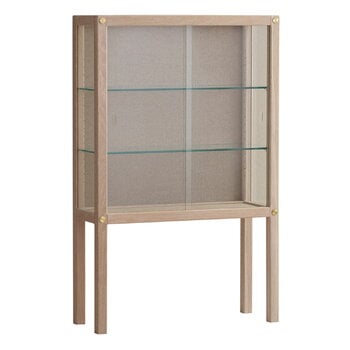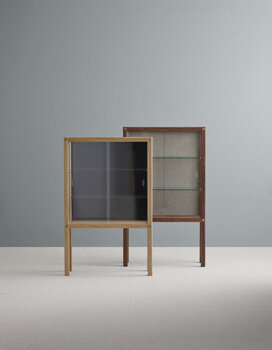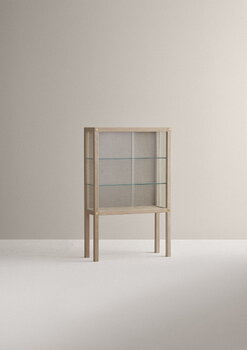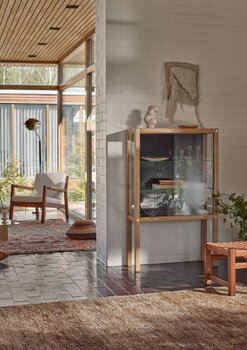The Näyttely showcase by Ornäs combines a robust solid wood frame with transparent, almost invisible sliding glass doors and shelves. The raw linen lining of the back wall provides a soft, organic setting for books, tableware or decorative items placed in the display cabinet. The metal details add to the elegance of the Näyttely showcase.
Hiort af Ornäs originally designed the Exhibition collection, launched in 1955, for interiors of Finnish embassies. The Näyttely series was re-launched in 2021, and the products are still today manufactured in Finland using original techniques. Their appearance honours the design traditions of the 50s yet blends in effortlessly with any contemporary decor.












